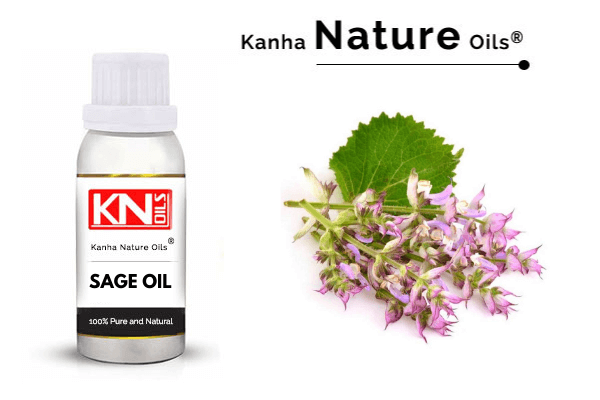SAGE OIL

- Botanical Name: Salvia officinalis
- CAS No.: 8022-56-8
- FEMA Number: 3001
- Flash Point (°C): 52
- Refractive Index: 1.4580 to 1.4720 at 20°C
- Specific gravity: 0.9120 to 0.9260 at 25 °C
- Optical Rotation (°): +2 to +20
- Color:Pale yellow
- Solubility: Soluble in alcohol & oils and insoluble in water
Description:
Sage (Salvia officinalis) plant is native to the southern European and Mediterranean regions. The Sage herb was considered to be sacred in both the ancient Greek and Roman societies, also referred to as True Sage, Dalmatian Sage, Garden Sage, and Common Sage.
Sage essential oil is commonly mistaken for Clary Sage Essential Oil because of their similar nomenclature, but these two oils are different as under:
1. Both oils are extracted from different plant and also different in aroma from each other
2. Botanical name are different: Sage oil (Salvia officinalis), Clary sage oil (Salvia sclarea)
3. Main constituents of oils are also different:
(i) Sage oil: Camphor, α-Thujone, β-Thujone, 1,8-Cineole, and α-Pinene.
(ii) Clary Sage oil: Linalyl Acetate, Linalool, Germacrene-D, alpha- terpineol, and Sclareol.
Cultivation and Harvesting:
In India, it is mainly propagated by seeds in dry temperate areas of the Himalayas with scanty rain as rainy weather reduces essential oil content. Soil should be well-drained, pH from 5.5 to 8, the plant is very resistant, can thrive even in poor soil. For the best growth of sage, the temperature of soil should be between 18-22°C.
Sage requires very little care. It is very drought tolerant. Sage plants can be propagated by direct seeding in the field, seeding in the nursery, and then transplanting in the field and by cuttings. In commercial cultivation, propagation by seed is common practice. Additional irrigation or fertilizer is not generally required. Irrigation and fertilizer are required in between the harvesting sessions so that the plants will be regenerating the foliage quickly.
Harvesting of leaves and flowers/buds is generally 2 to 3 times a year. Harvested materials are steam distilled for essential oil. The yield of essential oil from 0.18 to 0.35%.
Odor profile:
Herbaceous, fruity, fresh and camphorous
Major Constituents:
Camphor, α-Thujone, β-Thujone, Borneol, 1,8-Cineole, Caryophyllene, α-Pinene.
Application:
~ Sage essential oil helps in Muscular aches, Headaches, Digestive upsets, Sore throat, Menstrual cramping, Nervousness, Mental fatigue, Emotional exhaustion, Memory loss, and Acne.
Aromatherapy:
In aromatherapy applications, Sage Oil is known to balance the mental setup by promoting tranquility and relaxation diminishing anxiety-inducing sleep. This essential oil can be used in diffuser, inhalation, and massage with a blend of other oils.
WHY SHOULD YOU ASK
our latest catalog
We just want our customers to see how our industry prices are simple & best fit for them. For this you need to be updated from our side on daily basis. Ask our updated latest catalog with latest pricing. One more thing! our three fundamentals never change. We are committed with best price, purity & inhouse variety manufacturing. Want to know what they are? Find it here.




